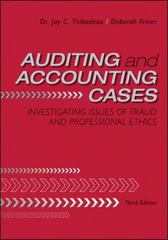Calculator Allowance method entries The following transactions were completed by Wild Trout Gallery during the current fiscal year ended December 31: Jan. 19. Reinstated the account of Arlene Gurley, which had been written off in the preceding year as uncollectible. Jour $2,660 cash in full payment of Arlene's account. Apr. 3. Wrote off the $12,750 balance owed by Premier GS Co., which is bankrupt. July 16. Received 25% of the $22,000 balance owed by Hayden Co., a bankrupt business, and wrote off the remainder Nov. 23. Reinstated the account of Harry Carr, which had been written off two years earlier as uncollectible. Recorded tt in full payment. Dec. 31. Wrote off the following accounts as uncollectible (compound entry): Cavey Co., $3,300; Fogle Co., $8,100; Lak Melinda Shryer, $1,200. Dec. 31. Based on an analysis of the $2,350,000 of accounts receivable, it was estimated that $60,000 will be uncollect adjusting entry. Required: 1. Record the January 1 credit balance of $50,000 in a T account presented below in requirement 2b for Allowance for Doubtful Accounts. 2. a. Journalize the transactions. If an amount box does not require an entry, leave it blank. Note: For the December 31 adjusting entry, assume the $2,350,000 balance in accounts receivable reflects the adjustments made during the year. Jan. 19 Calculator 2. a. Journalize the transactions. If an amount box does not require an entry, leave it blank. Note: For the December 31 adjusting entry, assume the $2,350,000 balance in accounts receivable reflects the adjustments made during the year. Jan. 19 Jan. 19 Apr. 3 II II III 10 bi bo b1 bI dI do! O DI DU I July 16 Nov. 23 Dec. 31 Calculator Nov. 23 Dec. 31 1111111 Dec. 31 2. b. Post each entry that affects the following T accounts and determine the new balances: Allowance for Doubtful Accounts Jan. 1 Balance Accounting numeric field Dec. 31 Adjusted Balance Dec. 31 Adjusted Balance Bad Debt Expense 3. Determine the expected net realizable value of the accounts receivable as of December 31 (after all of the adjustments and the adjusting entry). 4. Assuming that instead of basing the provision for uncollectible accounts on an analysis of receivables, the adjusting entry on December 31 had been based on an estimated expense of 1/2 of 1% of the sales of $15,800,000 for the year, determine the following: a. Bad debt expense for the year. b. Balance in the allowance account after the adjustment of December 31 c. Expected net realizable value of the accounts receivable as of December 31 (after all of the adjustments and the adjusting entry). Calculator Allowance method entries The following transactions were completed by Wild Trout Gallery during the current fiscal year ended December 31: Jan. 19. Reinstated the account of Arlene Gurley, which had been written off in the preceding year as uncollectible. Jour $2,660 cash in full payment of Arlene's account. Apr. 3. Wrote off the $12,750 balance owed by Premier GS Co., which is bankrupt. July 16. Received 25% of the $22,000 balance owed by Hayden Co., a bankrupt business, and wrote off the remainder Nov. 23. Reinstated the account of Harry Carr, which had been written off two years earlier as uncollectible. Recorded tt in full payment. Dec. 31. Wrote off the following accounts as uncollectible (compound entry): Cavey Co., $3,300; Fogle Co., $8,100; Lak Melinda Shryer, $1,200. Dec. 31. Based on an analysis of the $2,350,000 of accounts receivable, it was estimated that $60,000 will be uncollect adjusting entry. Required: 1. Record the January 1 credit balance of $50,000 in a T account presented below in requirement 2b for Allowance for Doubtful Accounts. 2. a. Journalize the transactions. If an amount box does not require an entry, leave it blank. Note: For the December 31 adjusting entry, assume the $2,350,000 balance in accounts receivable reflects the adjustments made during the year. Jan. 19 Calculator 2. a. Journalize the transactions. If an amount box does not require an entry, leave it blank. Note: For the December 31 adjusting entry, assume the $2,350,000 balance in accounts receivable reflects the adjustments made during the year. Jan. 19 Jan. 19 Apr. 3 II II III 10 bi bo b1 bI dI do! O DI DU I July 16 Nov. 23 Dec. 31 Calculator Nov. 23 Dec. 31 1111111 Dec. 31 2. b. Post each entry that affects the following T accounts and determine the new balances: Allowance for Doubtful Accounts Jan. 1 Balance Accounting numeric field Dec. 31 Adjusted Balance Dec. 31 Adjusted Balance Bad Debt Expense 3. Determine the expected net realizable value of the accounts receivable as of December 31 (after all of the adjustments and the adjusting entry). 4. Assuming that instead of basing the provision for uncollectible accounts on an analysis of receivables, the adjusting entry on December 31 had been based on an estimated expense of 1/2 of 1% of the sales of $15,800,000 for the year, determine the following: a. Bad debt expense for the year. b. Balance in the allowance account after the adjustment of December 31 c. Expected net realizable value of the accounts receivable as of December 31 (after all of the adjustments and the adjusting entry)










